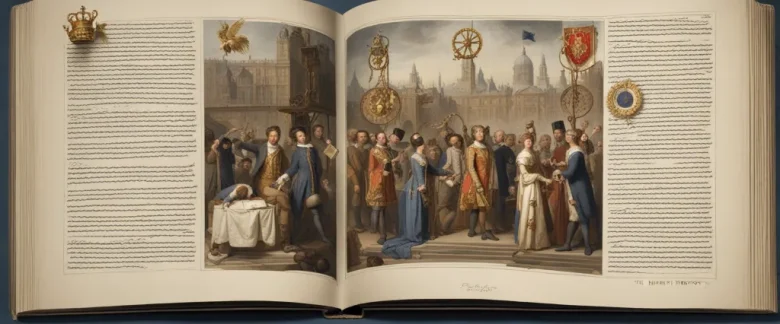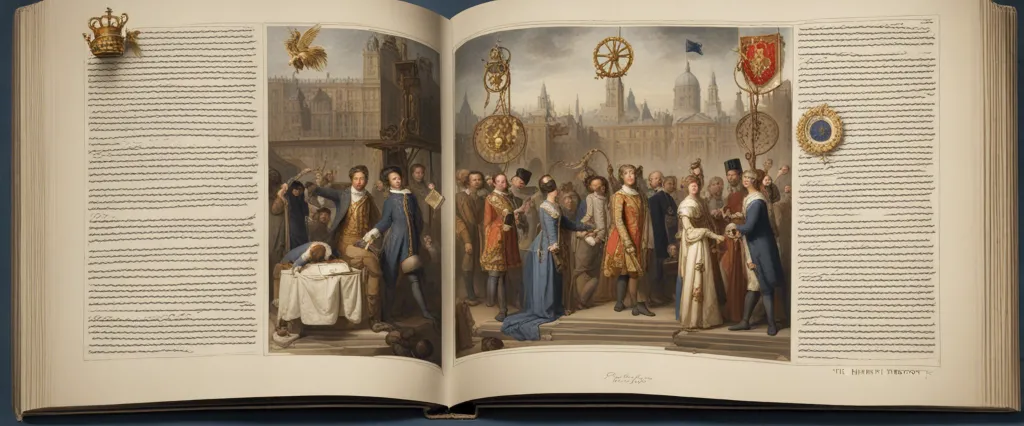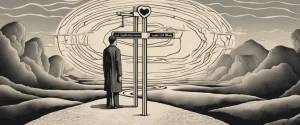In The Shortest History of Europe, acclaimed historian John Hirst takes readers on a concise yet captivating journey through the tumultuous and intricate history of Europe. Hirst, known for his lucid and engaging writing style, presents a fresh perspective on the continent’s past, unraveling its complex tapestry of politics, culture, and ideologies. Through his articulate storytelling and insightful analysis, Hirst invites readers to rethink their understanding of Europe and its legacy.
Chapter 1: Ancient Europe
Chapter 1 of “The Shortest History of Europe” by John Hirst focuses on the ancient European civilizations and their key characteristics. The chapter begins by highlighting the significant events in Europe’s distant past, such as the emergence of mankind in Africa, the migration of early humans to Europe, and the impact of the Ice Age on the continent.
Hirst explains how ancient Europe was inhabited by various tribes and cultures, each with its distinct traditions and languages. He introduces the Celts, who lived in regions including the British Isles, France, and Spain, known for their advanced metallurgy and mastery of iron. The author also discusses the Etruscans, an enigmatic civilization who settled in modern-day Italy, with their advanced city planning and expertise in pottery and metalwork.
The Greeks, pioneers of democracy and philosophy, marked a significant turning point in European history, contributing greatly to art, science, and politics. Hirst highlights their colonization of southern Italy and how Greek culture left a lasting impact on the land.
The Romans are portrayed as a civilization of immense power and organization, dominating most of Europe for centuries. Hirst emphasizes their focus on law, engineering, and infrastructure, and how their conquests facilitated a degree of political stability and economic prosperity across the continent.
Additionally, the chapter touches on the Germanic tribes, such as the Vikings and Goths, who made significant contributions while also posing a threat to established Roman power structures.
Overall, Chapter 1 provides a concise overview of the various ancient European civilizations, highlighting key cultural, technological, and political developments, laying the foundation for the rich and diverse history of the continent.
Chapter 2: Medieval Europe
Chapter 2 of “The Shortest History of Europe” by John Hirst explores Medieval Europe, a period spanning from the fall of the Western Roman Empire in the 5th century to the Renaissance in the 15th century. This chapter focuses on the political, social, and cultural changes that occurred during this time.
At the beginning of the chapter, Hirst highlights the rise of feudalism as the dominant political and economic system. Feudalism was characterized by a hierarchy of lords, vassals, and serfs, where land was granted in exchange for military service and obligation. It provided stability in a chaotic and uncertain era, allowing for the creation of local authorities and the formation of strong ties between individuals.
Religion played a significant role during medieval times, and Hirst describes the influence of the Catholic Church as a unifying force across Europe. He explains how the Church, led by the Pope, had a dominant role in shaping political and social affairs. The concept of Christendom emerged, emphasizing the unity of Christian Europe against external threats, such as Muslims during the Crusades.
Hirst also touches on the economic changes occurring during this period, including the shift from a subsistence-based agrarian economy to a more monetized one. Trade routes expanded, leading to the development of towns and cities, as well as the emergence of a middle class.
The chapter concludes by noting the gradual decline of feudalism and the rise of centralized monarchies, such as those seen in England, France, and Spain. These new systems marked a shift toward stronger centralized power and the consolidation of territories.
In summary, Chapter 2 provides an overview of Medieval Europe, highlighting the development of feudalism, the influence of the Catholic Church, economic changes, and the transition from fragmented feudal states to more centralized monarchies.
Chapter 3: Renaissance and Reformation
Chapter 3 of “The Shortest History of Europe” by John Hirst focuses on the Renaissance and Reformation, two pivotal periods that shaped Europe’s history. The Renaissance was a cultural and intellectual movement that emerged in Italy during the 14th century and spread throughout Europe in the following centuries. It marked the transition from the Middle Ages to the modern era, characterized by a renewed interest in literature, art, science, and humanism.
During the Renaissance, European societies experienced a resurgence of learning and innovations. The reintroduction of ancient Greek and Roman texts led to the Humanist movement, emphasizing the importance of human potential, individualism, and education. Prominent figures such as Leonardo da Vinci and Michelangelo influenced art with their ground-breaking works, while Copernicus challenged the traditional understanding of the universe by proposing a heliocentric model.
The Protestant Reformation, led by Martin Luther and other reformers, emerged as a response to the corruption and perceived abuses within the Catholic Church. Luther’s Ninety-Five Theses, published in 1517, criticized the Catholic Church’s sale of indulgences and other practices. The movement triggered a widespread religious upheaval across Europe, resulting in the splintering of Christianity into various denominations.
The Reformation ignited religious conflicts, wars, and political tensions between Catholic and Protestant factions, tearing the continent apart. The Holy Roman Empire became a battleground for these conflicts, leading to the Thirty Years’ War in the 17th century, which devastated central Europe.
This period of change and upheaval in Europe laid the foundation for the modern world. The Renaissance sparked a wave of exploration, scientific discoveries, and cultural innovations that reshaped Europe’s intellectual landscape. The Reformation challenged the authority of the Catholic Church, contributing to the formation of new religious sects and establishing the principle of religious freedom. These two movements ultimately set the stage for Europe’s shift towards the Enlightenment and the Age of Reason.
Chapter 4: Age of Enlightenment
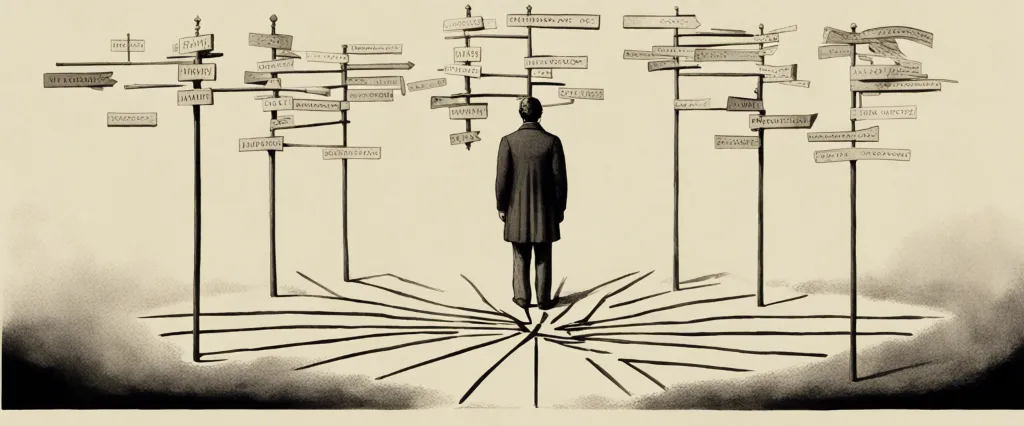
Chapter 4 of “The Shortest History of Europe” by John Hirst explores the Age of Enlightenment, an intellectual and cultural movement that shaped Europe in the 18th century. This transformative era heralded a shift in thinking as reason, logic, and science came to the forefront, challenging long-held religious and absolute monarchical beliefs.
Hirst begins by discussing the key thinkers who influenced the Enlightenment, including French philosophers such as Voltaire, Rousseau, and Montesquieu. These thinkers championed ideals like individual freedom, reason, and the importance of questioning authority. They critiqued the prevailing social and political structures, calling for greater equality and access to knowledge.
The chapter delves into the expansion of education and the rise of the intellectual salon, where ideas were shared and debated. Universities, academies, and societies were established across Europe to promote and disseminate knowledge, leading to a blossoming of intellectual progress.
Hirst also highlights the role of the printing press in disseminating Enlightenment ideas, underscoring how the availability of books brought knowledge to a broader audience, thus challenging old power dynamics.
Furthermore, the chapter explores the impact of the Enlightenment on the political landscape of Europe. Enlightenment principles, such as the belief in natural rights and the social contract theory, laid the groundwork for revolutions, including the American and French revolutions, which ultimately led to the downfall of absolute monarchy.
In summary, Chapter 4 of “The Shortest History of Europe” portrays the Age of Enlightenment as a period of intellectual awakening, emphasizing the key figures, the spread of knowledge, and the subsequent political consequences. By embracing reason, the Enlightenment challenged prevailing norms and laid the foundation for a more egalitarian and progressive Europe.
Chapter 5: Industrial Revolution and Nation-States
Chapter 5 of “The Shortest History of Europe” by John Hirst explores the profound impact of the Industrial Revolution on the formation and development of nation-states in Europe. This period of rapid industrialization and technological advancements brought significant social, economic, and political changes that reshaped the European continent.
Hirst begins by highlighting the revolutionary shift from an agrarian society to an industrialized one. The invention of machines, such as the steam engine and spinning jenny, led to the mechanization of production, which fostered economic growth and urbanization. Large-scale factories emerged, concentrating production and labor force in specific areas, resulting in the rise of modern industrial cities, including Manchester and Birmingham.
This transformation from agricultural to industrial societies led to new patterns of employment. Workers, often impoverished peasants from rural areas, flocked to factories seeking better livelihoods. However, these workers faced challenging conditions, including long working hours, low wages, and hazardous environments. Hirst emphasizes the rise of class consciousness and the formation of trade unions as a response to these challenges, as workers demanded better working conditions and fairer treatment.
The economic and social changes brought by the Industrial Revolution also impacted the political landscape of Europe. Hirst highlights how the rise of bourgeoisie, the middle class, who benefited greatly from industrialization, began demanding political power. This demand for representation and a voice in the decision-making process gave birth to nationalist movements seeking to establish nation-states. These movements advocated for the idea that a nation should be organized under one government, representing a common culture, history, and language.
The author discusses how the consolidation of nation-states occurred through various means, such as armed conflicts, negotiations, and diplomatic agreements. Notable events like the unification of Italy under figures like Giuseppe Garibaldi and Count Camillo di Cavour, as well as the efforts of Otto von Bismarck in unifying Germany, exemplify the nation-building processes that unfolded during this period.
In summary, Chapter 5 of “The Shortest History of Europe” delves into the profound changes brought by the Industrial Revolution, such as urbanization, class consciousness, and the rise of nationalism. The transformations in Europe’s economic and social structures paved the way for the formation and consolidation of nation-states, with the bourgeoisie leading the way in demanding political power and representation. This period shaped the modern socio-political landscape of Europe and set the stage for future developments.
Chapter 6: World Wars and Global Conflict
Chapter 6 of “The Shortest History of Europe” by John Hirst focuses on the World Wars and global conflict. The chapter dives into the causes, events, and consequences of the two World Wars that shaped Europe and the world in the 20th century.
The chapter begins by discussing the underlying causes of World War I, such as intense nationalism, rival alliances, and imperial competition among European powers. It describes the assassination of Archduke Franz Ferdinand of Austria-Hungary as the spark that ignited the conflict in 1914. The chapter then explores the horrific nature of trench warfare, the involvement of new weapons like tanks and poison gas, and the stalemate on the Western Front.
Moving forward, the chapter delves into the consequences of World War I, particularly the Treaty of Versailles, which imposed harsh penalties on Germany and is often seen as a contributing factor to the rise of Adolf Hitler and Nazi Germany. This, in turn, sets the stage for World War II.
The chapter then explores the events of World War II, discussing Hitler’s aggressive expansionism and the Nazi occupation of European countries. It underlines the Holocaust and the genocide of millions of Jews and other minorities as one of the most tragic aspects of the war. The Allied forces’ eventual victory and the subsequent division of Europe into Western and Soviet blocs are also covered.
Hirst concludes the chapter by reflecting on the devastating impact of these two global conflicts on Europe and the world. He emphasizes how the wars led to a reshaping of political boundaries, accelerated technological advancements, and triggered decolonization movements. The chapter closes by noting that Europe underwent a significant transformation, transitioning from being the center of global power to a more marginalized continent by the end of the 20th century.
Chapter 7: European Integration
Chapter 7 of “The Shortest History of Europe” by John Hirst provides an overview of European integration, tracing its origins and tracing the development of the European Union (EU) up until the early 21st century.
Hirst begins by highlighting the devastation caused by World War II and the desire for a new approach to maintain peace and rebuild the continent. The chapter explores the early attempts at integration through organizations like the European Coal and Steel Community (ECSC) and the Common Market. These initiatives aimed to foster economic cooperation and overcome national rivalries that had led to conflict in the past.
The author then delves into the Treaty of Rome in 1957, which established the European Economic Community (EEC), marking a significant milestone in the integration process. This led to the free movement of goods, services, and capital among member states and the creation of a common agricultural policy. Hirst also discusses the expansion of the EEC, with new members joining in subsequent decades.
The chapter further examines the various challenges faced by European integration, including debates surrounding sovereignty, economic inequality, and national interests. Hirst explores the Treaty of Maastricht in 1992, which established the EU as we know it today, with the addition of a common currency (the euro) and efforts towards political integration. The author analyzes the impact of the EU on member states’ economies, political institutions, and democracy, noting both its achievements and criticisms.
In summary, Chapter 7 of “The Shortest History of Europe” provides an overview of European integration, from its post-World War II origins to the establishment of the European Union. It highlights pivotal moments such as the Treaty of Rome and Maastricht, while delving into the challenges and impact of the EU on member states’ economies and political systems.
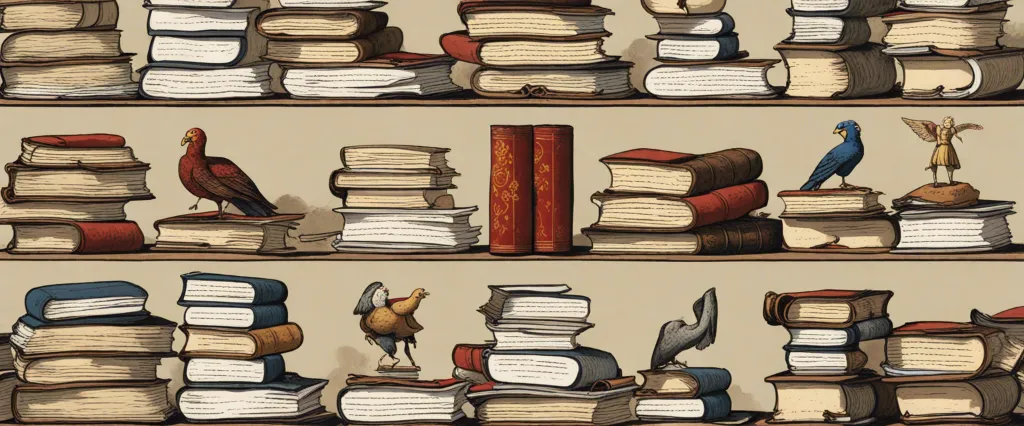
Chapter 8: Contemporary Europe
Chapter 8 of “The Shortest History of Europe” by John Hirst focuses on contemporary Europe, covering the periods from the aftermath of World War II to the present day. It examines the significant political, social, and economic changes that have shaped the continent.
The chapter begins by discussing the division of Europe into two opposing blocs during the Cold War – the Western countries, led by the United States, and the Eastern countries, dominated by the Soviet Union and its satellite states. It highlights the intense ideological rivalry and the impact it had on Europe, particularly in terms of military build-up, proxy wars, and the division of Germany.
Moving forward, the chapter delves into the major post-war trends that shaped Europe. This includes the gradual decline of European empires, with many former colonies seeking independence and adopting various political systems. Tensions and cooperation between European nations are also explored, ranging from the formation of the European Coal and Steel Community in 1951 to the establishment of the European Union in the 1990s.
Moreover, Hirst discusses the profound impact of social changes in Europe during this period. The chapter highlights the rise of the welfare state, the feminist movement, and changes in attitudes towards sexuality, as well as the challenges posed by immigration and multiculturalism.
The chapter also discusses the collapse of the Soviet Union in 1991, leading to the end of the Cold War and the ensuing geopolitical transformations. The integration of Eastern European countries into the EU, the expansion of NATO, and the emergence of new states are examined in detail.
In conclusion, Chapter 8 provides a broad overview of the political, social, and economic developments that have shaped contemporary Europe. It highlights the complex dynamics of the Cold War period, the progressive integration of European countries, and the diverse challenges faced by the continent in the modern era.
After Reading
In conclusion, “The Shortest History of Europe” by John Hirst offers readers a concise and accessible overview of the key events, ideas, and developments that have shaped the continent of Europe over the centuries. Hirst’s ability to condense complex historical facts into easily digestible narratives is particularly noteworthy, allowing readers to grasp the trajectory and interconnectedness of Europe’s past. From the ancient Greeks and Romans to the rise of Christianity, the Renaissance, the Enlightenment, the World Wars, and the formation of the European Union, this book covers a vast range of topics without sacrificing clarity or depth. Hirst’s engaging writing style and emphasis on the importance of geography, warfare, religion, and political thought make this book a valuable resource for anyone seeking a concise understanding of European history. Overall, “The Shortest History of Europe” serves as a compelling introduction to the continent’s rich and diverse past, serving as a gateway to further exploration and a deeper appreciation for the complexities that have shaped Europe into what it is today.
1. “A History of Europe in the Modern World” by R.R. Palmer and Joel Colton – This comprehensive book offers readers an in-depth exploration of European history, starting from the late 18th century and covering major events such as the French Revolution, the World Wars, and the Cold War.
2. “Postwar: A History of Europe Since 1945” by Tony Judt – In this highly acclaimed book, Tony Judt examines the aftermath of World War II and the subsequent transformation of Europe. He delves into political, economic, and social changes, providing a compelling narrative of postwar Europe.
3. “The Pursuit of Power: Europe 1815-1914” by Richard J. Evans – Focusing on the crucial period between the end of the Napoleonic Wars and the outbreak of World War I, this book presents a comprehensive account of the political, military, and cultural developments that shaped Europe during the 19th century.
4. “The Making of Europe: Conquest, Colonization, and Cultural Change, 950-1350” by Robert Bartlett – Robert Bartlett’s extensive research on Europe’s medieval history provides readers with valuable insights into the cultural, social, and political transformations that occurred during this period. The book covers various topics, including the Crusades, the spread of Christianity, and the emergence of feudalism.
5. A Little History of the World” by Ernst Gombrich – Written by one of the most renowned historians in the field, this book offers a concise and engaging overview of world history. Although not solely focused on Europe, it includes essential chapters that provide an accessible introduction to key European historical periods and events.
